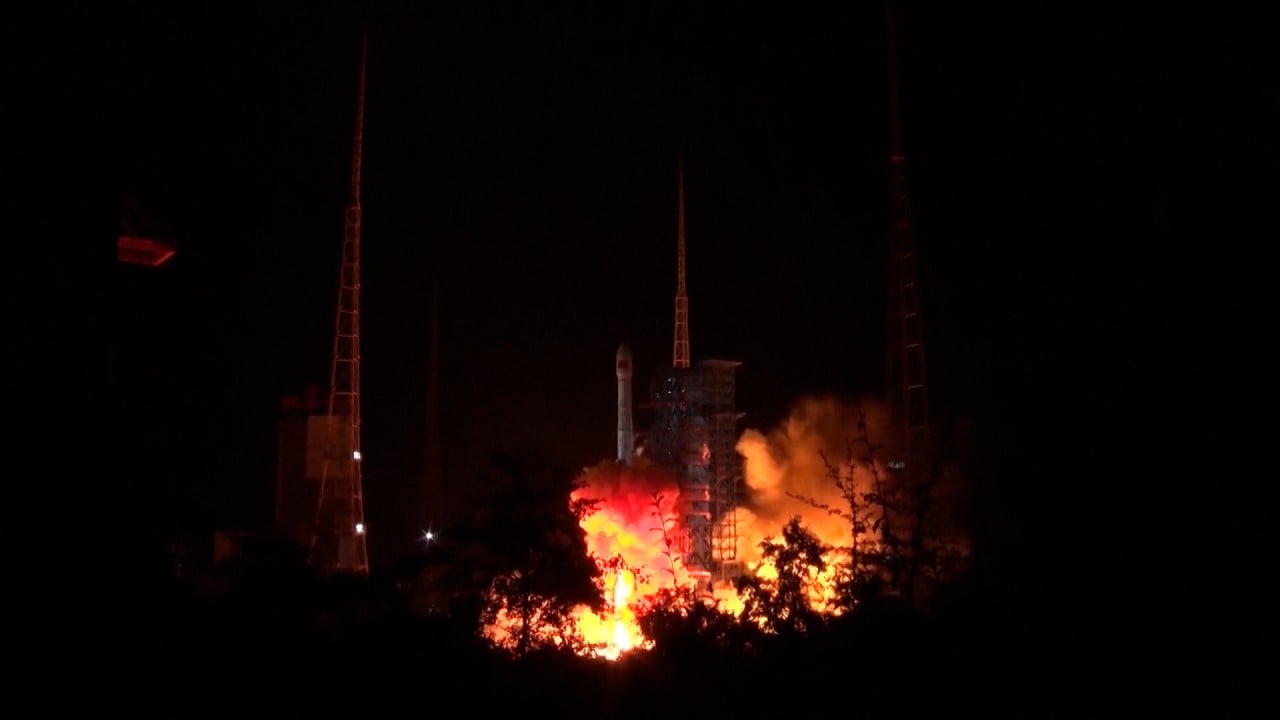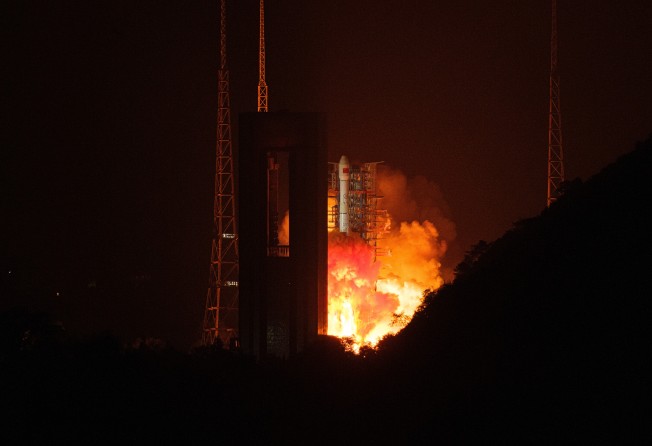
01:10
China launches more Gaofen satellites to boost national security and technological development

China has sent its Gaofen-13 satellite into orbit, kicking off a spree of space missions that will bring a dozen major launches in the next few months.
The Gaofen-13 was launched early on Monday morning with a Long March-3B (CZ-3B) rocket from Xichang Satellite Launch Centre in Sichuan province, in the country’s southwest.
It is a high-orbit remote sensing satellite, one of the Gaofen series, that will take high-definition optical images of the Earth.

01:10
China launches more Gaofen satellites to boost national security and technological development
“Gaofen” is a Chinese abbreviation of “high resolution”, which refers to the High Resolution Earth Observation Satellite programme.
China began the project in 2010 and has launched more than 20 satellites, over half of them in the past two years.
These satellites observe and take photos of the Earth, including some infrared ray images, which can be used for many civilian purposes, including monitoring pollution and environment, estimating agricultural yields, forecasting weather and disasters, and detecting minerals.

01:23
China launches last piece of BeiDou Navigation Satellite system into orbit
There are also military applications for the satellites. Last month, China released a video captured by the Jilin-1 Gaofen-3 satellite, in which it continuously tracked the flight of a fighter jet, thought to be an F-22, the most advanced American stealth fighter.
Stealth jets are designed to avoid radar detection, but are visible by optical observation. If equipped with higher-resolution cameras and advanced identification and tracking capabilities thanks to artificial intelligence, these satellites could serve as an important support to air defence radars.
By the end of March, China’s satellite launch sites will have a mission almost every other week, with the shortest gap being only five days, according to Zhang Xueyu, the director of the Xichang launch centre.
“This frequency is unprecedented and the operation will be constantly saturated, close to the limit of our capacity,” Zhang told government newspaper Science and Technology Daily.
The most notable launch will be that of the Chang’e-5 lunar exploration mission, which is scheduled for late November. It is expected to land on the moon and then return to Earth with at least 2kg (4.4 pounds) of lunar rock samples.

01:48
China launches mission to Mars with lift-off of home-grown Tianwen-1 spacecraft
China has ambitious space plans and has carried out a number of significant missions. This year alone, it has sent its first independent Mars probe, Tianwen-1, on the way to the red planet, completed the 30-satellite constellation for its BeiDou navigation system – its rival to the United States’ Global Positioning System (GPS) – and tested a new type of manned spaceship and its new heavy-lift rocket, Long March-5B.
Next year, the core module of a permanent Chinese space station is also on the agenda.
China considers space of great importance to both national security and technological development.
Meanwhile, it is banned by Washington from taking part in US-led space programmes. This forced Beijing to be self-sufficient, such as by building a space station of its own, and developing BeiDou.
While the relationship with the US has deteriorated in the past couple of years and been described by some as a new cold war, competition in space has intensified, including in efforts to carry out the next manned mission to the moon.
The establishment of the US Space Force last December was a symbolic event. China, too, stepped up its space programmes, and this summer brought a head-on race to Mars, with China’s Tianwen-1 and Nasa’s Perseverance launched one week apart.